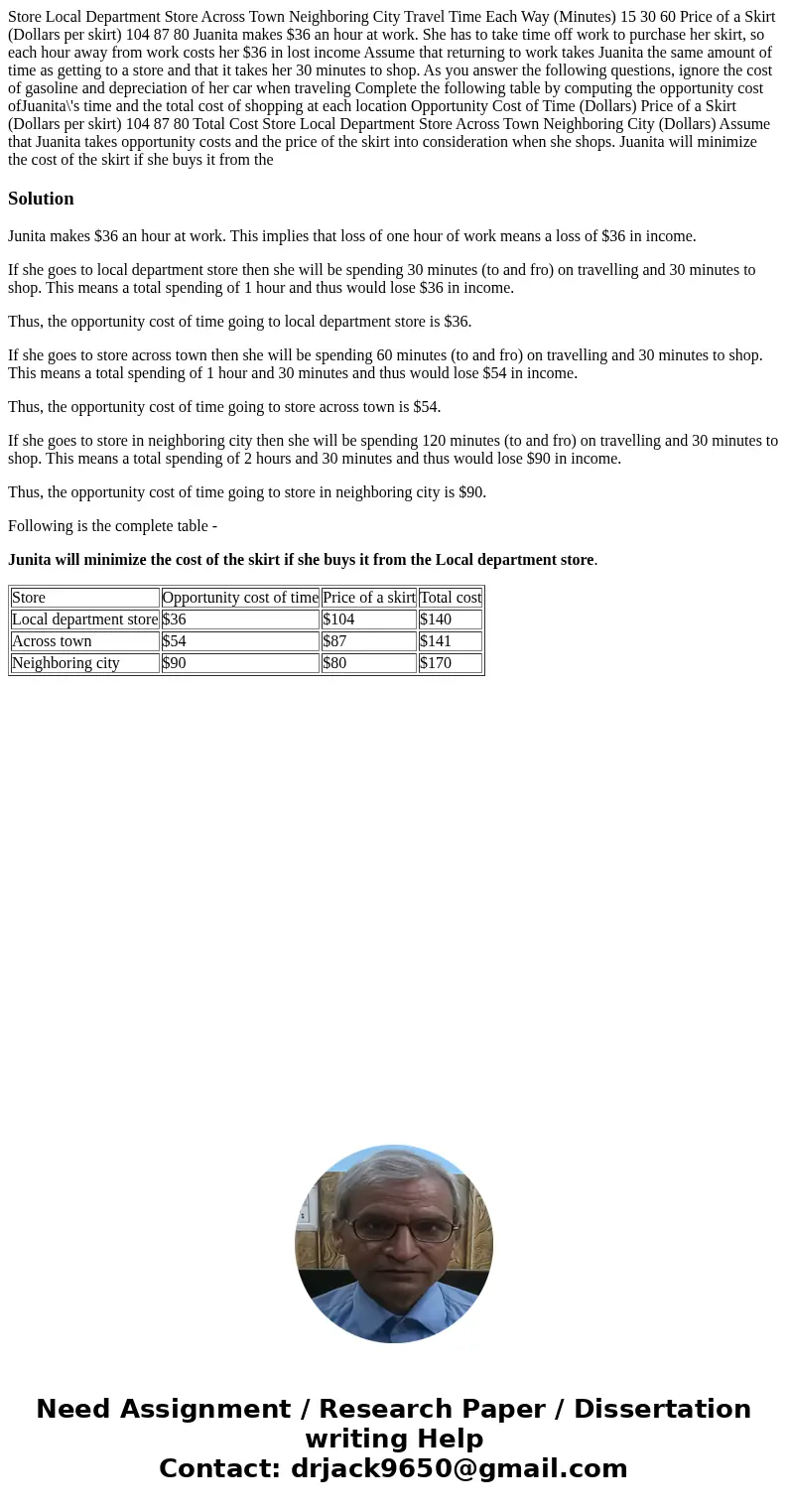Store Local Department Store Across Town Neighboring City Tr
Solution
Junita makes $36 an hour at work. This implies that loss of one hour of work means a loss of $36 in income.
If she goes to local department store then she will be spending 30 minutes (to and fro) on travelling and 30 minutes to shop. This means a total spending of 1 hour and thus would lose $36 in income.
Thus, the opportunity cost of time going to local department store is $36.
If she goes to store across town then she will be spending 60 minutes (to and fro) on travelling and 30 minutes to shop. This means a total spending of 1 hour and 30 minutes and thus would lose $54 in income.
Thus, the opportunity cost of time going to store across town is $54.
If she goes to store in neighboring city then she will be spending 120 minutes (to and fro) on travelling and 30 minutes to shop. This means a total spending of 2 hours and 30 minutes and thus would lose $90 in income.
Thus, the opportunity cost of time going to store in neighboring city is $90.
Following is the complete table -
Junita will minimize the cost of the skirt if she buys it from the Local department store.
| Store | Opportunity cost of time | Price of a skirt | Total cost |
| Local department store | $36 | $104 | $140 |
| Across town | $54 | $87 | $141 |
| Neighboring city | $90 | $80 | $170 |

 Homework Sourse
Homework Sourse